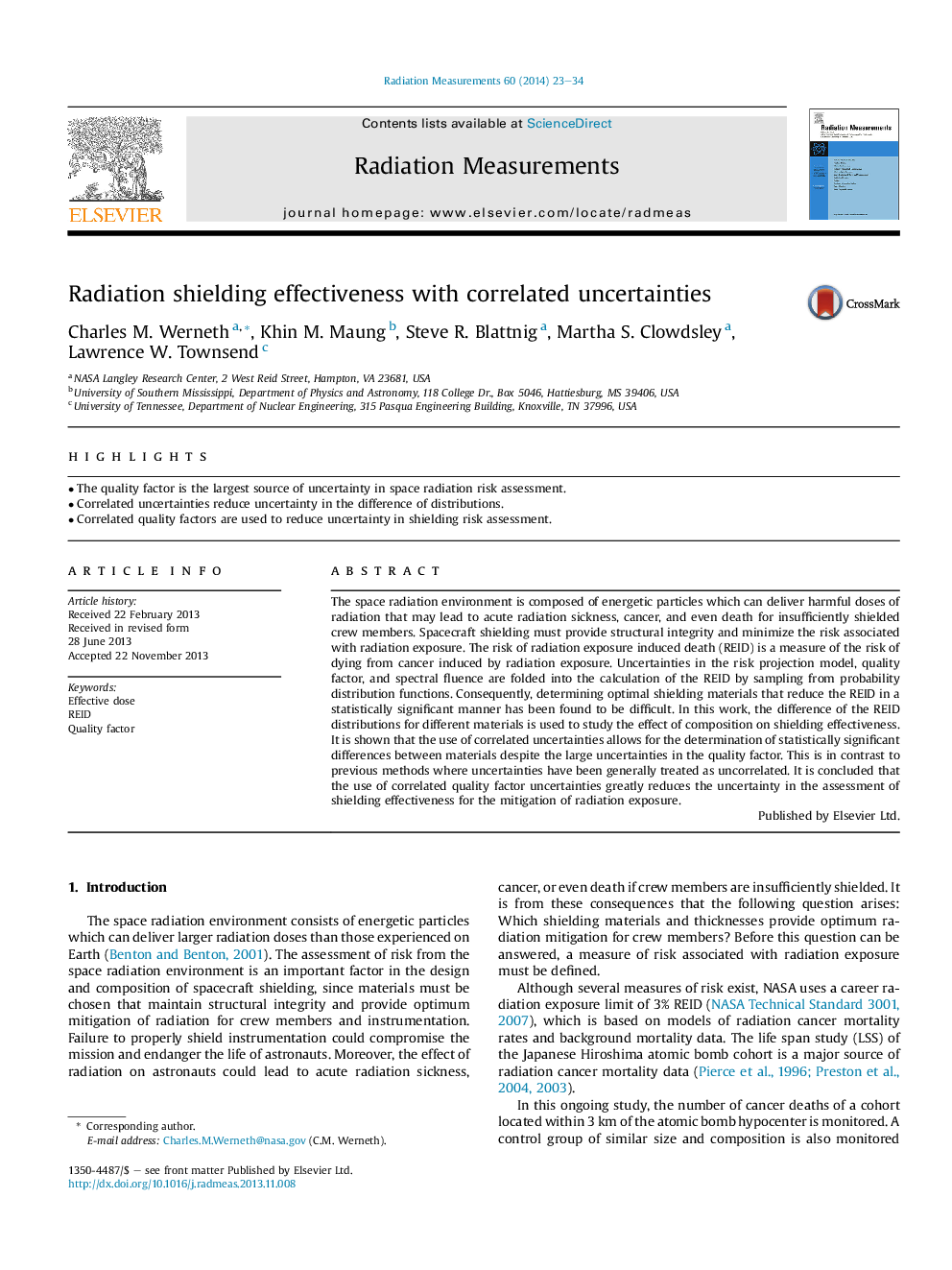| Article ID | Journal | Published Year | Pages | File Type |
|---|---|---|---|---|
| 1884917 | Radiation Measurements | 2014 | 12 Pages |
Abstract
The space radiation environment is composed of energetic particles which can deliver harmful doses of radiation that may lead to acute radiation sickness, cancer, and even death for insufficiently shielded crew members. Spacecraft shielding must provide structural integrity and minimize the risk associated with radiation exposure. The risk of radiation exposure induced death (REID) is a measure of the risk of dying from cancer induced by radiation exposure. Uncertainties in the risk projection model, quality factor, and spectral fluence are folded into the calculation of the REID by sampling from probability distribution functions. Consequently, determining optimal shielding materials that reduce the REID in a statistically significant manner has been found to be difficult. In this work, the difference of the REID distributions for different materials is used to study the effect of composition on shielding effectiveness. It is shown that the use of correlated uncertainties allows for the determination of statistically significant differences between materials despite the large uncertainties in the quality factor. This is in contrast to previous methods where uncertainties have been generally treated as uncorrelated. It is concluded that the use of correlated quality factor uncertainties greatly reduces the uncertainty in the assessment of shielding effectiveness for the mitigation of radiation exposure.
Keywords
Related Topics
Physical Sciences and Engineering
Physics and Astronomy
Radiation
Authors
Charles M. Werneth, Khin M. Maung, Steve R. Blattnig, Martha S. Clowdsley, Lawrence W. Townsend,
